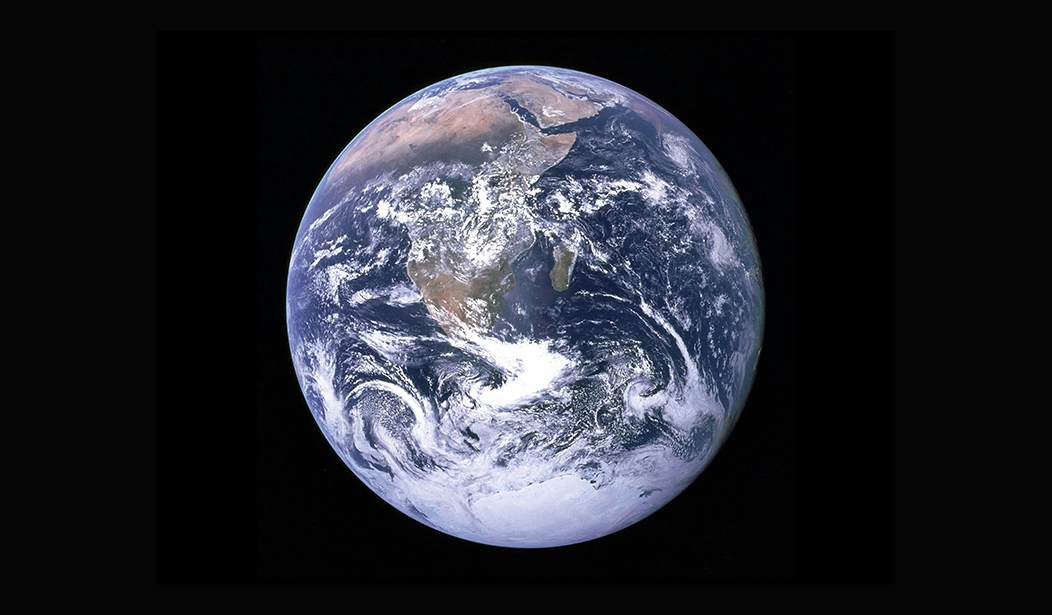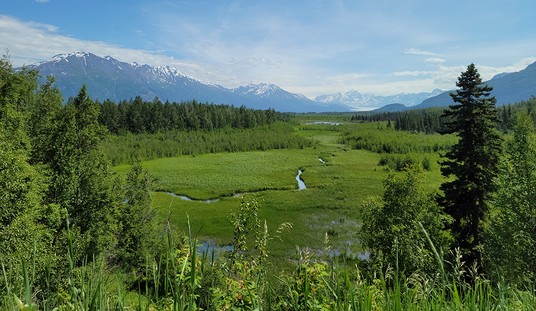One thing we have always known about our planet and its systems, about this little blue-white spinning ball in the vastness of space, is that it has a great capacity for self-correction. An asteroid strike or a cataclysmic volcanic event happens, 50, 80, 90 percent of life is wiped out, and a few million years later, the world is green again, the rivers are flowing, the oceans and lands are full of life. This happened catastrophically at the end of the Permian, at the end of the Cretaceous, and on a smaller scale at other times.
So it should come as no surprise that Earth's climate, that vast, chaotic system we are only beginning to understand, seems to have great capacity for self-regulation, and a lot of that regulation comes from something as simple as heat flow.
Watts Up With That's guest poster Willis Eschenbach has some interesting insights here.
What got me into investigating climate science a quarter-century ago? The astounding stability of the Earth’s global surface mean temperature (GMST). For example, since the year 1900, a century and a quarter, the Earth’s temperature has gone up by 0.46 ± 0.07 percent.
I’ll say it again. In a century and a quarter the Earth has warmed by less than half a percent
The Earth’s climate system is a curious thing. It is a giant solar-driven heat engine. A heat engine is a device that turns heat into mechanical motion. In the case of the climate, the mechanical motion is the endless, ceaseless motion of the ocean and the atmosphere. Like all heat engines, the climate heat engine is heated at the hot end, and then the heat is transferred to the cold end and leaves the engine.
Here's the thing: It's not strictly a south-to-north flow. This much is certain: here in Alaska, we got a great demonstration of that last winter, when the infamous polar vortex drew frigid air from the Canadian Arctic down over the central United States, while the swirl of air pulled warm, wet Pacific air up over Alaska, giving us an unusually mild (and rainy) winter. But on the larger picture, yes, warm air is brought to the northern and southern poles, where it dumps its heat and returns to the warmer climes; this is primarily done by ocean currents. We've known this for some time.
But, as Mr. Eschenbach observes, the heat flow responsible for climate change changes as its inputs change.
Like all flow systems far from equilibrium, the climate is ruled by the Constructal Law, one of the most under-appreciated discoveries of modern thermodynamics. The Constructal Law governs the evolution of flow systems.
And as the Constructal Law requires, the climate heat engine is constantly evolving to maximize the flow. The Constructal Law is a sort of Ten Commandments for anything that flows—rivers, blood, traffic, and, yes, the climate itself. The basic idea?
Everything that moves is constantly evolving and morphing to make movement easier. Life, it turns out, is just one big game of “How can I get from here to there with the least amount of fuss?” The Constructal Law is why river deltas look like the branches of a tree, which in turn look like the alveoli in our lungs. They are all controlled by the Constructal Law.
From a Constructal Law point of view, the climate is not a fragile, teetering system on the verge of collapse, but a gigantic, heat-hauling Rube Goldberg machine.
That's an interesting claim, but a note of caution is in order. This is an interesting phenomenon, but it's only one part of a vast system, and much of that system has its feedback loops, each part has capacity for self-regulation, and each part changes as its inputs and outputs change. Yes, the climate changes. Yes, humans have an effect. But this, as with so many other examinations of the facts, goes to support what I've been saying, and writing, for years: None of this justifies abandoning our modern, technological lifestyle, or the energy-production methods that support it. The Earth will go on taking care of itself.
See Also: It's Already Really Hot, but It's Not Our Fault
Remember the Polar Vortex? It's Still Not Climate Change.
Mr. Eschenbach makes some interesting points, but the primary point remains: The global climate is still, in large part, beyond our ken. Our understanding of it is increasing with every passing year, and the claims of the climate scolds are falling by the wayside with each new examination of facts. But the heat flow described here would continue even if the planet's overall temperature warmed, as the ocean currents would continue moving north and south; this is a primary reason why, as recently as the Oligocene, there were no polar ice caps. And the climate is still vast, still chaotic, still beyond our capacity to model effectively.
The climate scolds would do well to consider this - but then, if they were interested in facts over hysteria, in data over politics, in liberty over control, they wouldn't be climate scolds.














